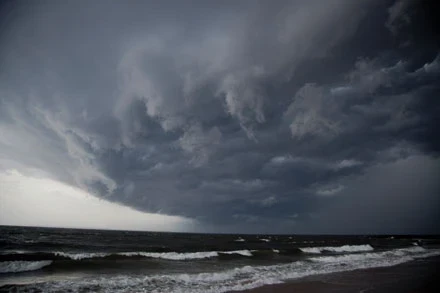Governments Emphasize Links Between Climate Change and Nature Loss

In a landmark shift, governments around the world are increasingly emphasizing the direct links between climate change and the collapse of biodiversity. This interconnectedness, which has often been treated as separate issues, is now being recognized as two sides of the same coin in the fight for planetary survival. Experts warn that tackling one without addressing the other will make efforts to combat either much less effective. At recent global summits and conferences, policymakers have stressed that both the climate crisis and the loss of nature must be approached with equal urgency, as their impacts are inseparable.
The Climate-Nature Nexus
Climate change and the decline of biodiversity have long been seen as distinct challenges, often dealt with by separate ministries, organizations, and funding streams. Climate change is traditionally addressed through emission reductions, carbon pricing, and renewable energy transitions, while biodiversity loss is addressed through conservation efforts, habitat protection, and sustainable land-use policies. However, this dual approach has led to fragmented solutions that do not fully account for the ways in which these two crises are intertwined.
In recent discussions, scientists and leaders have emphasized that these issues are deeply interconnected. For example, the destruction of forests, wetlands, and mangroves — all critical ecosystems for biodiversity — also accelerates climate change. These ecosystems store vast amounts of carbon, and their destruction releases that carbon into the atmosphere, intensifying global warming. Conversely, the climate crisis is driving habitat destruction, extreme weather events, and shifts in species populations, further driving the collapse of nature.
At a recent United Nations conference, a joint statement from multiple nations called for a unified global framework that addresses both climate change and biodiversity loss simultaneously. The statement highlighted how the destruction of nature exacerbates climate impacts, and how climate change undermines efforts to protect biodiversity. This dual approach, they argued, is essential to achieving both the goals of the Paris Agreement on climate and the global biodiversity targets set in recent international treaties.
Shared Solutions: Nature-Based Solutions
A growing body of research points to the need for "nature-based solutions" as a key strategy to address both crises. Nature-based solutions involve protecting, restoring, and managing natural ecosystems in ways that provide both environmental and societal benefits. These solutions not only protect biodiversity but also help mitigate the effects of climate change by sequestering carbon, regulating water cycles, and reducing the impacts of natural disasters.
For instance, preserving and restoring forests is one of the most effective ways to combat climate change. Forests act as carbon sinks, absorbing more carbon than they emit. At the same time, forests are home to countless species and provide essential ecosystem services, such as clean water and air. Similarly, protecting wetlands and mangroves, which act as buffers against rising seas and storm surges, also helps protect coastal communities from the impacts of climate change while conserving vital marine and terrestrial biodiversity.
Restoring degraded landscapes — from forests to grasslands — is another crucial nature-based solution that can provide benefits to both the climate and biodiversity. Reforesting areas, reintroducing native species, and managing agricultural practices sustainably are all ways that ecosystems can be restored to their natural state, boosting resilience to climate impacts while simultaneously reversing biodiversity loss.
The Urgency of Integrated Action
World leaders have acknowledged that the urgency of addressing both the climate and biodiversity crises together is greater than ever. A report from the Intergovernmental Panel on Climate Change (IPCC) and the Intergovernmental Science-Policy Platform on Biodiversity and Ecosystem Services (IPBES) issued earlier this year warned that without integrated approaches, humanity risks failing to meet the twin challenges of mitigating climate change and halting biodiversity loss. The report underscored the need for robust policies that address the dual crises through coordinated action, blending climate policy with biodiversity conservation strategies.
The consequences of inaction are dire. The IPCC's projections show that, without immediate efforts to curb emissions and protect ecosystems, global temperatures could rise by as much as 3-4°C by the end of the century. This increase could trigger severe biodiversity losses, with ecosystems such as coral reefs, forests, and wetlands disappearing at an accelerating rate. The loss of biodiversity, in turn, undermines the ability of ecosystems to adapt to changing climates, creating a vicious cycle that becomes harder and more expensive to break.
Moreover, the impacts of these combined crises are disproportionately felt by vulnerable populations, particularly Indigenous communities and those living in poverty. These communities depend on healthy ecosystems for their livelihoods, food security, and cultural practices. Protecting both the climate and nature, therefore, is not just an environmental issue but a social and economic one as well.
Moving Forward: A Call for Collaboration
The recent emphasis on the connection between climate change and biodiversity loss is a call to action for governments, businesses, and civil society. Solutions will require collaboration across sectors, integrating conservation efforts with climate action policies. This means that environmental groups, agricultural industries, energy providers, and urban planners must all work together to develop policies that protect and restore ecosystems while reducing carbon emissions.
The next steps will involve creating more comprehensive frameworks that align global climate and biodiversity agreements. Governments will need to provide the financial resources, incentives, and regulatory frameworks to support integrated solutions. International organizations, such as the United Nations, will play a crucial role in fostering cooperation and guiding the implementation of these strategies at the global level.
In conclusion, the urgent need to address both climate change and biodiversity loss has become more apparent than ever. By recognizing their interconnectedness and adopting nature-based solutions, the world can build a more sustainable and resilient future, one where the protection of nature and the fight against climate change go hand in hand.









